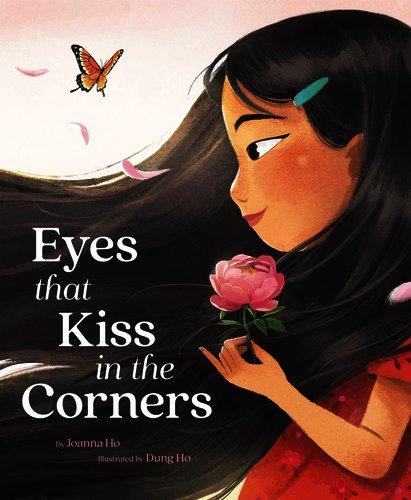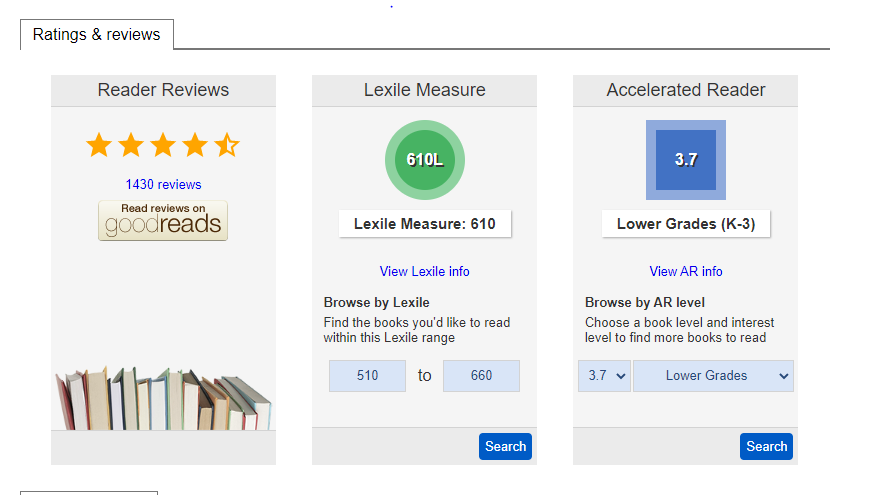Posted by Casey on Friday, May 26, 2023
Have you ever come to the children's desk and asked, "Where can I find the level 1 books?" or "Where are your books with a Lexile number of...." and received a roundabout answer?
Leveled reading is a dominant educational structure within which most caregivers and children learning to read will find themselves functioning. Leveling books can be a helpful tool for finding books that children can read independently or "just right" reads, but it is just that, a guideline, not a hard and fast rule.
First, let's explore the concept of leveling. Reading "at level" means that by the end of the grade year, the average child in that grade is reading with a proficiency of 'x'. Reading skills, like most others, lie within a bell curve. While the center of the curve is the average reading level by the end of the year, 50% of children will be above and 50% below this center. This is to be expected and is not necessarily an indicator of future reading success.
Another thing to note is that background knowledge increases reading levels. If I have a child who loves dinosaurs with lots of knowledge about them, then they will be reading books about dinosaurs at a higher level than other books. And at a higher level than a child who does not have that paleontology interest. This means children have multiple reading proficiency levels depending on their background knowledge and interests. Thus, that proficiency bell curve looks different for different content, and a child may be reading "at level" for some things and not others.
Each leveling system is different, and individual publishers have their own leveling rules which is confusing (a Level 1 "I Can Read" Book might be equal in vocabulary to a Level 2 "Step Into Reading" book). To combat this confusion, some libraries both public and school, organize materials based on internal systems of leveling. This involves creating a system from scratch, making each book adhere to this internal system, organizing accordingly, and informing your users about this internal system. At ICPL, we do not organize children's materials based on levels.
 Joanna Ho's and Dung Ho's "Eyes that Kiss in the Corners" offers a nice example of how leveling systems differ in defining "just right" books. Eyes that Kiss sits at the very top end of 1st-grade leveling for two common systems, with a Developmental Reading Assessment (DRA) score of 16 and a Guided Reading or Fountas & Pinnell level of 'I'. However, the Lexile measure is AD610L. AD, Adult Directed, indicates that this book is generally read to a child, extending readership down to pre-K. But the score of 610 means an independent reader would be closer to this Lexile level anywhere from the end of grade 2 through grade 3. That's a wide range of "just right" readability and only includes three of the most common leveling systems. Considering the vast number of reading level conversion charts available through a simple Google search, this lack of conversation between leveling systems is problematic for those learning to read using leveling systems.
Joanna Ho's and Dung Ho's "Eyes that Kiss in the Corners" offers a nice example of how leveling systems differ in defining "just right" books. Eyes that Kiss sits at the very top end of 1st-grade leveling for two common systems, with a Developmental Reading Assessment (DRA) score of 16 and a Guided Reading or Fountas & Pinnell level of 'I'. However, the Lexile measure is AD610L. AD, Adult Directed, indicates that this book is generally read to a child, extending readership down to pre-K. But the score of 610 means an independent reader would be closer to this Lexile level anywhere from the end of grade 2 through grade 3. That's a wide range of "just right" readability and only includes three of the most common leveling systems. Considering the vast number of reading level conversion charts available through a simple Google search, this lack of conversation between leveling systems is problematic for those learning to read using leveling systems.
Leveling can lead to self-censorship, with books outside of an individual's reading level left unconsidered. Allowing children to read easy books independently improves confidence and proficiency. Reading books above level is excellent too, but reading only challenging books can be discouraging, leading to frustration. When do we get to make reading fun? The key is to make reading enjoyable and challenging at the same time. What better way to do this than to allow your readers the space and autonomy to select what they want to read based on their interests, and sprinkle in some "just right" reads for good measure along the way?
Now, if you would still like to know where our leveled books are, I have good news! We can harness the catalog to search for a Lexile range for you. Let's stick with our previous book example. Search for "Eyes that Kiss in the Corners" in the ICPL catalog, then open the page for the title. Scroll to the bottom of the page past the box of Novelist results, here you will see a window that looks like this--

In the center box, you can input a Lexile range for searching, or browse content based on Accelerated Reader scores. If you're not using Lexile, use this conversion chart from Model Teaching to approximate an appropriate range or search for the conversion you need online. Children's librarians are also more than happy to help find "just right" reads based on interests and levels as well!
Happy Summer Reading!


Gifts you can make! These fairytale inspired blankets are adorable and cozy for the upcoming winter. -Casey